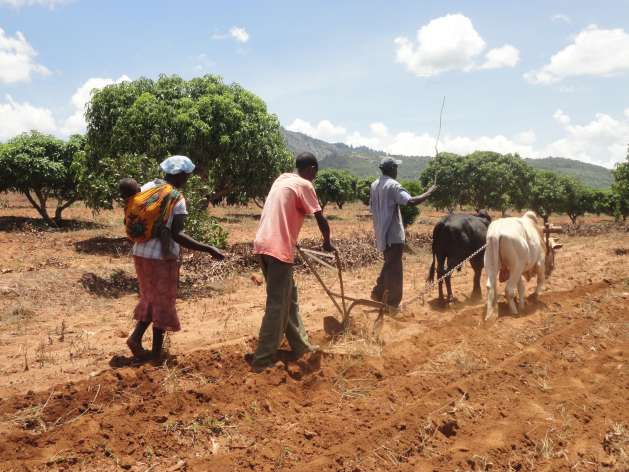Tuesday, April 16, 2024
News and Views from the Global South
Opinion
Kenya’s Potential in Agriculture Lies in Rural Transformation

Market place in rural Kenya -Photo: Courtesy of FAO
- Agriculture plays a pivotal role in the livelihoods of Kenya’s majority, providing both formal and informal employment with women accounting for about 70 percent of the agricultural labour force.
The sector, dominated by smallholder farmers, generates approximately 60 percent of Kenya’s exports and directly contributes about 30 percent to the National Gross Domestic Product (GDP). However, considering the country’s vision for the agricultural sector, the sector has performed below its potential.
Kenya’s vision is outlined in the Agricultural Sector Development Strategy, an amalgamation of the priorities laid out in both the regional Common Market for Eastern and Southern Africa (COMESA) and the national Comprehensive African Agricultural Development programme (CAADP) to be achieved through specific targets.
The sector aims at significantly contributing to the reduction of hunger and the number of people living below absolute poverty lines to less than 25 percent as set under the Sustainable Development Goals.
It is estimated that 10 million people in the country are categorized as chronically food insecure and with the current looming drought 2.7 million people are at risk, the most affected being women and children in rural areas. The Semi-Arid Lands represent Kenya’s next agricultural frontier and are identified in the agricultural development strategy as a key priority for future development.
Creating farmer-market linkages has great potential to spur tremendous growth in the agricultural sector. There continues to be a huge unmet market demand for specific crops particularly pulses and cereals in both domestic and international markets.
Market opportunities for agricultural products continue to grow in national, regional and global markets around the world such as in large retail supermarket chains and in emerging markets like India, Poland and South Africa. These new market conditions provide great opportunities for farmers to increase their productivity, incomes and employment opportunities as well as improve the food security situation and nutritional status in the country.
However, despite these opportunities, there is a total disequilibrium in the market dynamics in the rural semi-arid regions of Kenya. Owing to a low history of commercialisation, these agricultural chains are dominated by middle men who often do not provide value but instead, exploit the farmers who get caught up in a vicious cycle of poverty as they are permanently indebted to the middle men.

A family in Kenya’s semi-arid area till the soil in preparation for the next planting season – Photo: Courtesy of FAO
One approach towards a solution is through increased productivity and profitability of small holder farmers by promoting and upscaling good agricultural practices and the context-based farming approach of conservation agriculture (CA) in productive semi-arid areas of Kenya. This approach is based on three core principals which are minimal tillage, maintenance of soil cover, and crop rotation that help farmers to increase yields, reduce the costs of production, improve soil fertility and to conserve water and the environment.
An on-going four-year project (2014-2018) financed by the European Union and implemented by the Food and Agriculture Organisation of the United Nations (FAO) is currently being implemented in eight counties across Kenya.
The project focuses on the promotion of conservation agriculture and targets 80,000 farmers with at least 40 percent being women. Its strong agribusiness component involves facilitating linkages between farmers and end markets. This is done through contract farming that is a pact between the farmers and companies for the production and supply of specific agricultural products based on an agreement and at a price which is pre-determined by the farmers and the firms. The project is executed in collaboration with both the national and county governments, local organisations, farmer groups and the private sector.
Rural transformation is a process that requires an appropriate institutional framework and financial inclusion to provide an enabling environment for improved productivity and commercialisation to happen.
With improved market access and direct linkage to end buyers, rural communities are increasing their profitability, incomes and livelihoods. This in turn is having a direct contribution on rural communities’ improved food security, nutritional status and economic freedom.
Gabriel Rugalema is FAO Representative to Kenya and Alessio Colussi is the Head of Crops and Agribusiness Sector of the Food and Agriculture Organization (FAO) of the United Nations.
-
http://secure49.com Jack Horton
-
Fanie Brink
-
gingermavy .
-
https://printablecalendar365.com/october-2017-calendar/ October 2017 Calendar

 Print
Print



